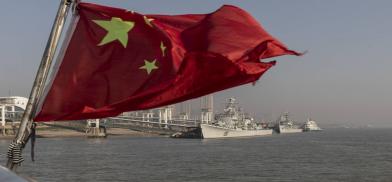China's growing maritime muscle has implications for IOR security
India has signed a $375 million contract with the Philippines for three batteries of BrahMos supersonic cruise missiles, among the most advanced in the world. This will be seen by Beijing as a direct threat to its interests in the South China Sea.

The world’s largest navy, by numbers of ships, is expanding its reach. For the first time, the Chinese navy were seen docking at the Ream Naval Base in Cambodia, the newly expanded base which boasts a pier large enough for an aircraft carrier is serving as a strategic outpost near the South China Sea for Beijing. The US state department sounded the alarm about the base back in June of 2022, expressing concern over Cambodia allowing the People’s Liberation Army Navy to operate from a base in the Gulf of Thailand, as it signifies further expansion of the Chinese military, hellbent on imposing its will in international waters.
Cambodia’s Defence Minister Tea Seiha posted pictures on his Facebook of the PLA ship docking at Ream. The post included shots of Cambodian officials with the Chinese ambassador and at least two Chinese warships. The docking of those two ships coincides with an official Cambodian visit by a top Chinese defense official as well.
The big fear about China having a base in Cambodia isn't just about the PLA expanding its reach, but also about the resources the Ream Naval Base will provide it. Things like dry docks which are useful if you need to repair ships damaged by combat in the South China Sea or the Bay of Thailand. Satellite images suggest the Chinese ships docked in Cambodia may be type 56 Corvettes, a popular PLA warship. In a post on Telegram, Cambodia's Prime Minister Hun Manet said China's visit was continuation of the military cooperation between the two countries.
Effects on regional security
China’s growth as a maritime power has a direct impact on the regional security and balance of the Indo-Pacific region. The latest example is the new base in Cambodia, which isn't too far from the critical Malacca Straits, a crucial waterway between East Asia and the rest of the Indian ocean.
Earlier released images of a new port being constructed with Chinese funds in Cambodia are New Delhi’s latest headache regarding the threat of Chinese naval expansion. The Ream base lies on the Gulf of Thailand and extends Beijing’s military reach into Southeast Asia. It’s not far from Singapore and therefore close to the strategic Malacca Straits.
The Ream base has striking similarities to China’s first overseas base in Djibouti, in the Horn of Africa, a base with direct security ramifications for India. Maxar satellite images showed a Chinese warship docked on the base which continues to be under development for India. The Chinese navy continues to grow faster than any navy in the world, and in the next three years their numbers are expected to go up to 460 ships and submarines. In addition to this there are at least 85 patrol vessels, several armed with anti-ship cruise missiles.
Challenges for India
India is well positioned to monitor the waters of the Indian Ocean not just through warships but also maritime reconnaissance aircraft such as the P8. Closely aligned with the US, UK, France, Japan and Australia, New Delhi hosts several rounds of maritime exercises every year including the Malabar Exercise with Quad countries.
India counters Chinese influence by building relations with its regional partners. In 2023, New Delhi decommissioned and transferred the guided missile corvette INS Kirpan to Vietnam, a move the Indian Navy chief said was an assurance to our "friends and partners". India has also transferred a Russian built submarine to Myanmar; This is Myanmar's first and only serving submarine.
India has signed a $375 million contract with the Philippines for three batteries of BrahMos supersonic cruise missiles, among the most advanced in the world. This will be seen by Beijing as a direct threat to its interests in the South China Sea. What remains clear, though, is that thousands of kilometers away from the contentious Himalayan boundary India and China are in the midst of a serious battle for presence in the waters of the Indian Ocean. It's not just about establishing influence but a lot of it has to do with attempting to control waters through a key maritime route that connects the Far East with Europe.
(The author is a post-graduate of MMAJ Academy of International Studies, JMI, New Delhi suswith specialisation in Chinese studies, International Political Economy, and Third World security. Views are personal. He can be contacted at aaqibhayat5298@gmail.com or on Twitter: @aaqibhytt.)
issues. It was really informative. Your site iss
very useful. Many thanks for sharing!
Этот процесс подтверждает полное соответствие государственным стандартам и законам, что, в свою очередь, гарантирует защиту покупателей от небезопасной продукции.
<a href="https://ok.ru/group/70000035249585/topic/158856376596657">сертификация качества</a>
К тому же, сертификация помогает деловые отношения с заказчиками и повышает возможности для бизнеса.
При отсутствии сертификатов, возможны проблемы с законом и сложности в процессе реализации продукции.
Вот почему, официальное подтверждение качества не только требованием законодательства, и мощным инструментом для успешного развития компании в России.










Post a Comment